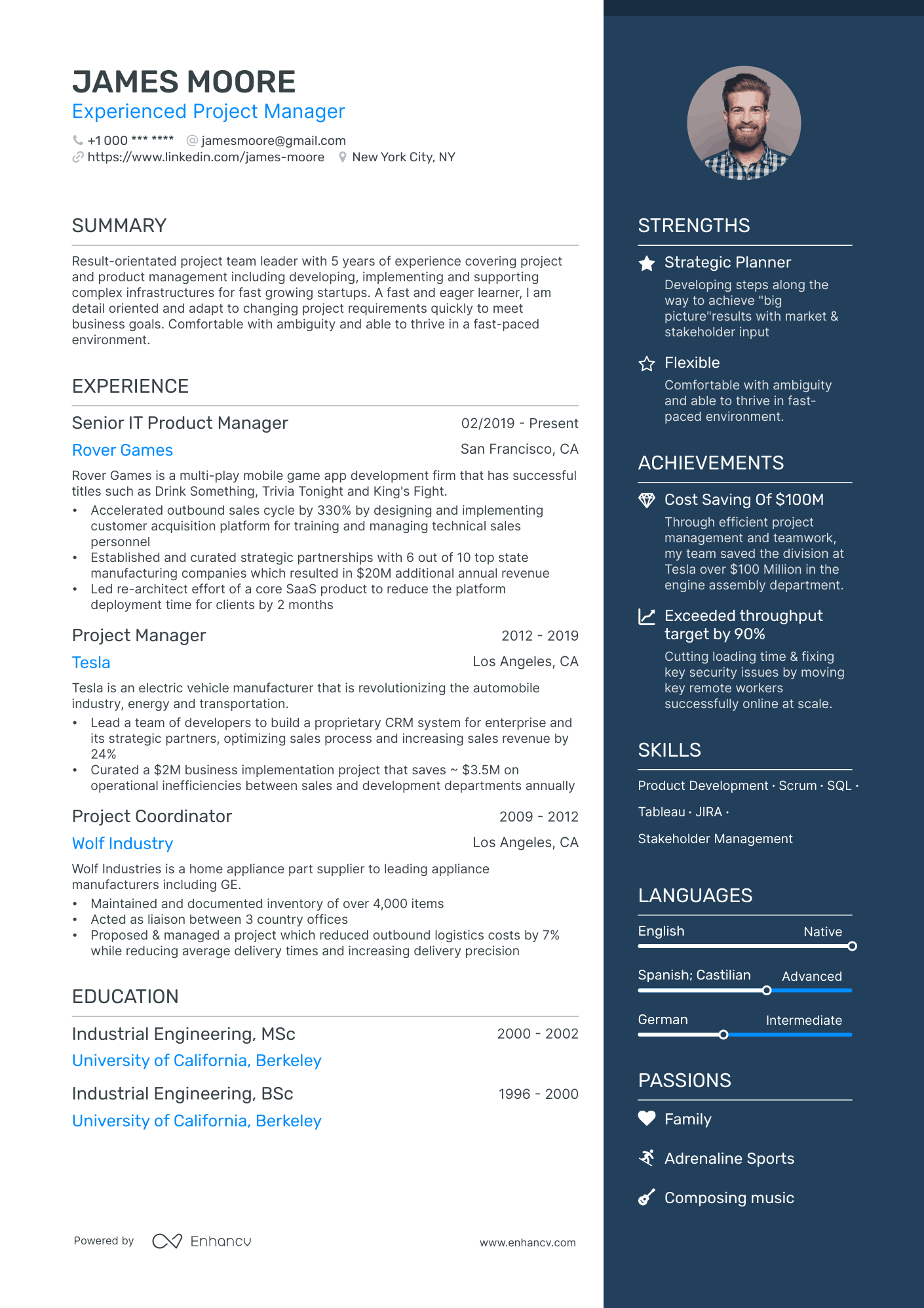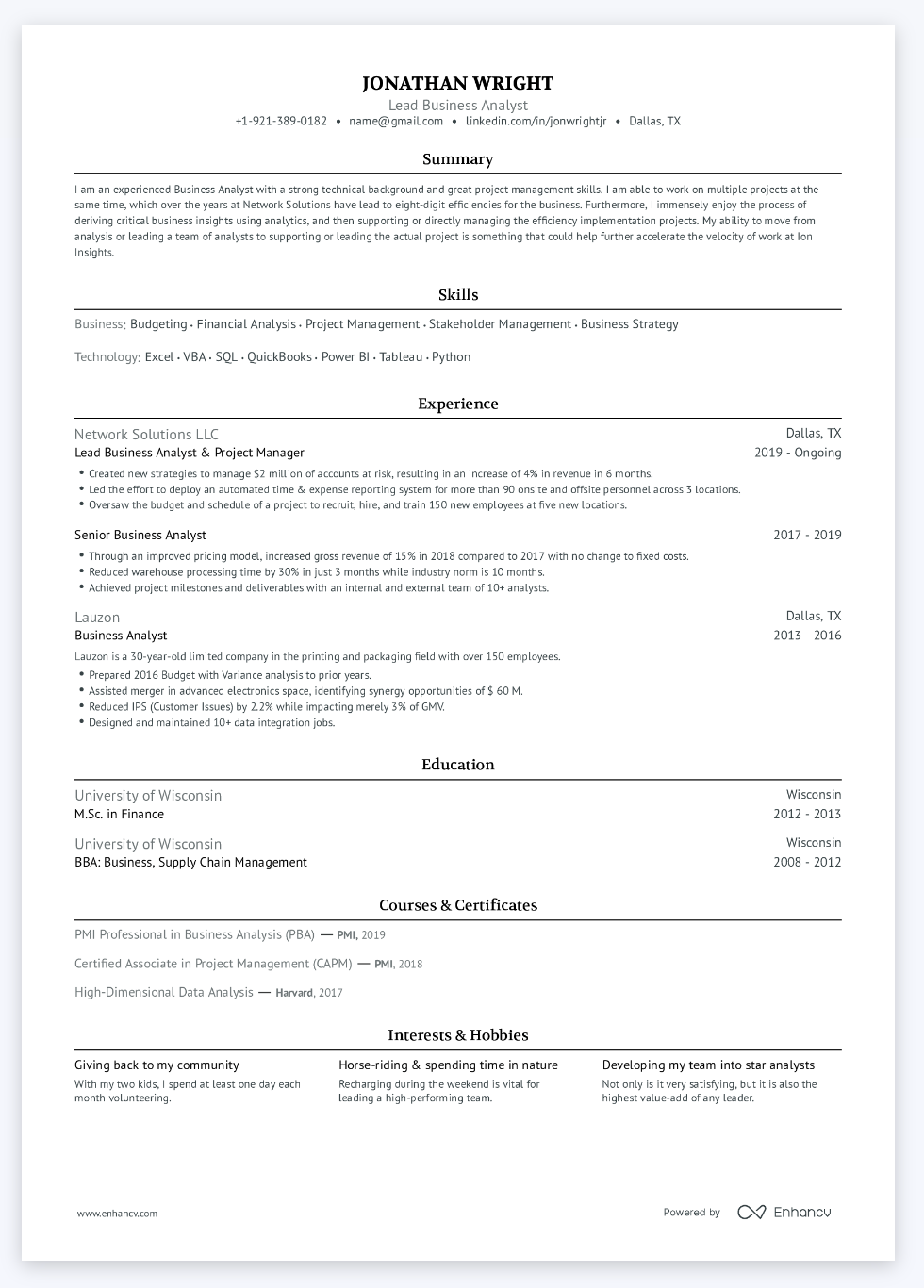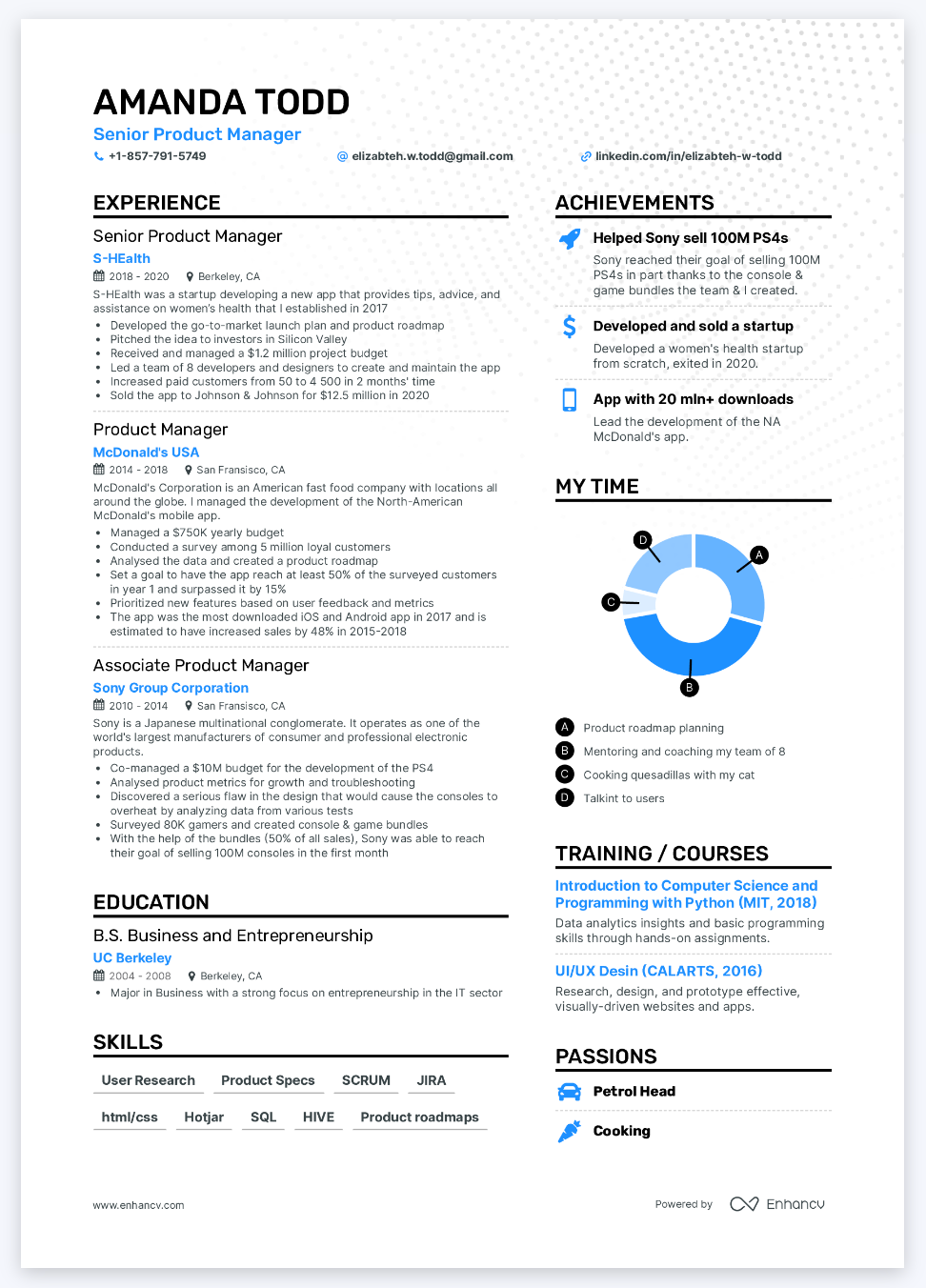Dusting off the ol’ resume to begin a job search can be bittersweet.
The promise of a new position and workplace is exciting. But the idea of writing or updating your resume is daunting.
Maybe you’re a recent graduate and this is your first time tackling a resume. Or you might be looking to enter a different industry after a long career.
How can you be sure your resume is modern and up to date?
There’s a lot of advice out there on the subject, so we’ve broken it down for you. Read below for our tips and suggestions on how to write a modern resume.
Once you’ve reviewed all the elements of a great modern resume, use our resume builder to get started on yours today.
Is your resume good enough?
Drop your resume here or choose a file. PDF & DOCX only. Max 2MB file size.
Performance-based experience
Resumes today are all about performance. Gone are the days of listing only your title and a brief description of roles and responsibilities.
That’s a sure way to bore recruiters and get your resume tossed right in the trash.
Hiring managers already know the job description. They want to see specific accomplishments and goals you achieved in previous roles.
This will help them to envision you at their company and the impact you will have on success.
The key thing to remember here is to back up all your accomplishments with real data and specific numbers.
Let’s take a look at examples from the experience section of a modern resume.
- •Reported sales team results to executive management on a monthly basis
- •Researched new marketing strategies to increase short and long term revenue
The example above includes basic job duties that are generic and boring. No specific achievements are mentioned and no numbers are used.
Words like “researched” and “reported” are useless with no outcome attached. This candidate researched strategies to increase revenue, but were they successful?
Emphasize results and accomplishments in your work experience.
- •Built a sustainable buyer network from Massachusetts to South Carolina that generated $6.3M in revenue
- •Led a team of 14 representatives on outreach initiative, increased customer satisfaction rating to 92%
This example is a big improvement. It shows real, tangible numbers and specific achievements. Hiring managers will be able to visualize the kind of success you’ll bring to their company.
Mentioning that you led a successful team will be useful when listing soft skills. It provides tangible evidence to your claim that you have strong leadership.
Recruiters won’t just take your word for it. Use examples to support your claims.
For more guidance and examples of performance-based experience on modern resumes, search our collection of resume examples for resumes in your industry.
Human-centric qualities
Having a modern resume packed with stats and figures is great, but you’re not a robot.
Businesses want to know they’re hiring a human being that will fit into their company culture. This is especially true for client-facing or leadership roles that involve working with people regularly.
Including a little bit of your personality on your resume will also help to separate you from the countless other qualified candidates who applied for the role.
Recruiters might have a stack of resumes with identical skills and titles, but how many of them will include a passion project that directly relates to the target job?
Here are a few examples of sections to add to your resume that will make it more personal:
- Strengths. Strengths are a great way to highlight your soft skills. Terms like “communication” and “time management” can be open to interpretation, and you don’t want recruiters making any assumptions. Use this as an opportunity to prove yourself with examples.
- Favorite books. Listing your favorite books shows a passionate and creative side. This will provide insight into your personality and help hiring managers determine if you are a good fit for the company culture.
- My life philosophy. Your life philosophy informs the way you work and will impact your performance at the company. Including this will show recruiters what’s important to you and what makes you passionate about the job.
- My time. This is a unique and creative way to showcase your work/life balance and how you divide your time. This is especially helpful for dynamic roles like actors or journalists.
- Volunteering. Work history isn’t the only place to gain experience. Volunteer work can be a great opportunity to showcase your passions outside the industry or how you developed soft skills like communication and responsibility.
Making your resume more human-centric can help you stand out, but it still needs to be relevant.
Don’t add in random hobbies and interests that have nothing to do with the job. Select a few of the most relevant experiences and highlight them.
Short and concise sections
The ideal resume length varies depending on factors like industry, title, and experience.
For standard 1-2 page resumes, being brief and concise is key. Recruiters have a lot of resumes to look through. You want them to see your best qualities right away.
You have limited space to work with, so make it count. This can be especially difficult if you’ve been working in your industry for more than a decade and have a long list of accomplishments.
Focus on the ones that show your strengths and are most relevant to the target job. Every section of your modern resume from the header to the education section needs to be concise and engaging.
Let’s look at an example of a resume summary that captures these best practices.
In just 3 sentences this candidate describes their experience, provides an achievement in the industry, and explains how their goals align with the target company’s needs.
From the very beginning, recruiters will have an idea of who they are as a candidate.
Job-specific words and phrases
Something you definitely want to avoid when creating your modern resume is writing blanket statements that aren’t specific to your target job.
Recruiters don’t want to see a resume that’s been mass-produced to send out to companies in bulk. They want to know that you’ve done your research on the role.
Writing a targeted resume can be the factor that either lands your name on a shortlist to interview or right in the trash.
A targeted resume is what you get when every section of your resume is tailored specifically for the job you’re applying for.
If you think this sounds like more work than writing a generic one-size-fits-all resume, you’re right. That’s why most candidates don’t do it.
Submitting a targeted resume will immediately put you ahead of the competition.
Start writing your targeted resume by following these steps:
- Study your target job. Read your target job description again and again. Research the company. Learn what their needs are and identify how your skills can provide solutions.
- Choose the right layout. Select a layout that puts the focus on your most relevant experience and skills. Arrange the sections of your resume so that recruiters get the most important information fast.
- Use a customized title. A custom title will show recruiters you’re qualified before they even make it past your header. Instead of a generic title like “manager” or “developer,” try “restaurant manager” or “Java full-stack developer.”
- Frame your experience. When writing bullets for your experience section, choose only achievements that are relevant to your target job. You want every section to count, so focus on your top strengths.
- Select ATS-appropriate keywords. ATS (Applicant Tracking Systems) are used to filter resumes for keywords and phrases. Be sure to include industry-specific terms from the job description so you don’t get filtered out of the process.
When pulling words and phrases from the job description, be sure to incorporate them into your resume naturally.
You want recruiters to see that you’ve done your homework, not that you can copy and paste. Lazy work like that will be quickly spotted and thrown out.
Natural heatmap layout
Recruiters spend a remarkably short time looking at each resume that crosses their desk. Odds are that recruiters will spend less than 8 seconds looking at yours.
You need to make every second count.
A resume heatmap refers to the natural path a recruiter’s eye follows as they look over a resume. An eye-tracking study conducted by Ladders observed the focus of recruiters as they reviewed a stack of resumes in search of potential candidates.
The top performing resumes had the following elements in common:
- Clean, simple layouts and fonts
- Clearly marked sections and titles
- Layouts designed for reading in an F-pattern and E-pattern
- A mission statement at the top
Formatting a great modern resume on your own can be intimidating. Fortunately, we have a large selection of resume templates to help you get started.
The first thing you want to do is decide which layout is right for you:
- Chronological resume. Puts the focus on your experience section and highlights your most relevant achievements.
- Functional skills-based resume. Focuses on your skills and portfolio details with less emphasis on work experience.
- Hybrid/Combination resume. Combines the above two layouts to best tailor your resume to your target job.
Let’s take a look at a few examples from our collection of templates.
This candidate is using the elegant layout template which has a compact, easy-to-read format.
This is a great choice if you have a lot to include in a small space. It allows room for many sections without looking too busy or overcrowded.
The ivy league template shown here has a simple design that is optimized for ATS scanning.
This single-column format is a fitting choice for executive resumes that focus on a few highlights from a long career. If you’ve been in your industry for more than a decade, be selective about which work experiences to include.
This double-column layout is a great choice for positions that require soft skills and special projects.
The flexible design allows for creativity while remaining professional. A lot of information is conveyed in a small space without being overwhelming for the recruiter.
All of the above resumes follow a natural heatmap that allows the reader to scan the page quickly and pick up the highlights.
Key takeaways for writing a modern resume
- Focus on performance instead of responsibilities, show hiring managers what you have achieved and how you will impact success at their company
- Show that you’re a human being and not a machine, a little personality goes a long way
- Be short and to-the-point n every section of your resume, show recruiters who you are in a matter of seconds
- Tailor your resume to your target job using industry-specific keywords and phrases, study your target company and identify their needs
- Utilize a natural heatmap with your resume layout, choose a format that is clear and easy to read.
Make one that's truly you.





